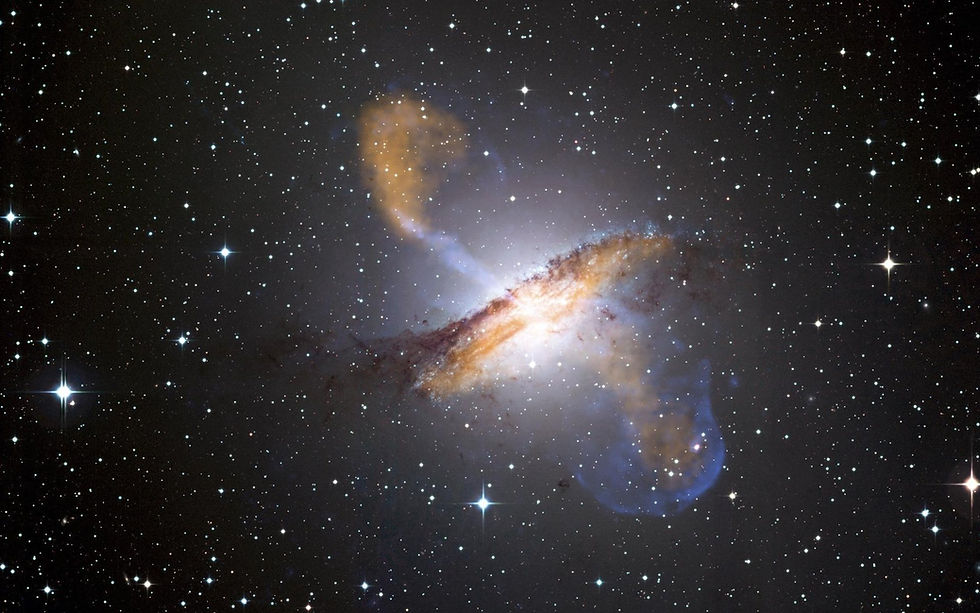Canada in Space: Canadarm(s) & Dextre
- Sylvia Rose

- Mar 14
- 4 min read
Canada's space program includes the Canadarm2, an extendible arm on the International Space Station, and multitalented robot Dextre. Canada is known for cutting-edge robotics and strong space mission support.

Canada's space program establishes a reputation for reliability and ingenuity. This dedication advances space science, fosters a vibrant domestic space industry and inspires generations of young Canadians.
Canada’s investment in space exploration begins the 1960s, motivated by a desire to be part of worldwide scientific efforts and increase tech capabilities. The Canadian Space Agency (CSA) is founded in 1989.

The CSA is the central body responsible for coordinating national space activities. One of its hallmark strategies is fostering international collaborations, especially with NASA and other global agencies.
In robotics, Canada is a leader of space innovation. The Canadarms and Dextre are significant technological advancements in the history of space exploration.

Canada's ISS contribution includes:
The Space Station Remote Manipulator System (SSRMS), known as Canadarm2.
the Mobile Remote Servicer Base System (MBS).
the Special Purpose Dexterous Manipulator (SPDM, also known as "Dextre" or "Canada hand")
Two or more Canadian astronauts have missions aboard the space station in 2025.
Canadarm 1 and 2 and ...
The Canadarm is officially known as the Shuttle Remote Manipulator System (SRMS). The revolutionary robotic arm first flies aboard the Space Shuttle Columbia in 1981. Though referred to as singular there are actually five original Canadarms.

Developed by Spar Aerospace (now MDA), the Canadarm is designed to deploy and retrieve payloads, help with spacewalks, and do repairs on the Shuttle. It provides unprecedented dexterity and control in space.
About 15 m (49 ft) long, the Canadarm can lift items weighing up to 30 metric tons. Astronauts on the shuttle can use it to manipulate large and delicate objects with an intuitive joystick and set of precise controls.
During its operation, the Canadarm deftly captures satellites for servicing. Its accuracy enables increasingly complex missions.

The Canadarm is a boon to research and experiments. It facilitates more than 90 missions, leading to groundbreaking discoveries, such as better understanding of microgravity effects.
But that's not all. Launched in April 2001, Canadarm 2 is a larger, more advanced version of the Space Shuttle's original Canadarm, for use on the International Space Station (ISS).
Canadarm 2 is 17.6 m (58 ft) when fully extended and has seven motorized joints. They are 'elbow' hinge in the middle, and three rotary joints at each of the 'wrist/shoulder' ends.
Canadarm and Canadarm 2 work together until Canadarm's retirement. Also built by MDA, Canadarm 2 is used in the space station's assembly, maintenance, and operation. Unlike its predecessor, Canadarm2 is mobile.

It can move along the exterior of the ISS using a "hand-over-hand" technique. This allows it to reach any part of the station's exterior. It's an indispensable tool for astronauts and ground controllers.
In June 2024, MDA Space is granted the complete contract for the design and construction of Canadarm3. This smaller arm is planned to be used for docking the modules and inspecting the Lunar Gateway.
Also begun in 2024, the Lunar Gateway is an inhabited space satellite meant to orbit the moon. Fourteen space agencies are involved in its production.
Studies on the Gateway are to include planetary science, astrophysics, Earth observation, heliophysics, fundamental space biology, human health and performance.

Dextre
Canada introduces Dextre in 2008. It's a highly sophisticated robotic system designed for specialized tasks aboard the ISS.
Known as the Special Purpose Dextrous Manipulator, Dextre is launched on the Space Shuttle Endeavour. It represents a mighty leap in robotic capabilities.
Design and Functionality
At 3.5 m tall, Dextre has two articulate arms capable of fine movement and an arsenal of interchangeable tools. It handles cargo and does repairs without astronauts having to conduct spacewalks.
Dextre's impressive 17 degrees of freedom enable complex operations, from changing out batteries to fixing critical components. Since its introduction, it has contributed to more than 100 operational tasks.

Dextre greatly extends the operational life of the ISS. By taking over tasks previously done by astronauts during spacewalks, Dextre aids crew safety and maximizes scientific output of the station.
Astronauts can focus on experiments, with Dextre on maintenance. It can be remotely controlled from the ground. Mission control can have it change small parts on the station's exterior, inspect equipment and do repairs.
Beyond robotics, Canada's space program encompasses a range of activities, including:
Space Science: Canadian researchers are actively involved in space-based scientific investigations from studying Earth's atmosphere to distant galaxies.

Earth Observation: Canada has developed several satellites dedicated to monitoring the Earth's environment, providing valuable data for climate change research, resource management, and disaster response.
Satellite Communications: Canada is a leader in satellite communications, with a well-established industry providing services to remote communities and supporting various sectors, including navigation, broadcasting, and internet access.
Canada's space program continues to develop robotic expertise and contribute to international missions exploring the Moon and beyond. The country develops new technologies, such as artificial intelligence and autonomous systems, to fortify human abilities in space.

READ: Lora Ley Adventures - Germanic Mythology Fiction Series
READ: Reiker For Hire - Victorian Detective Murder Mysteries


